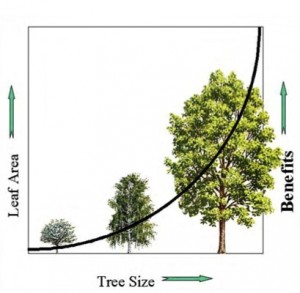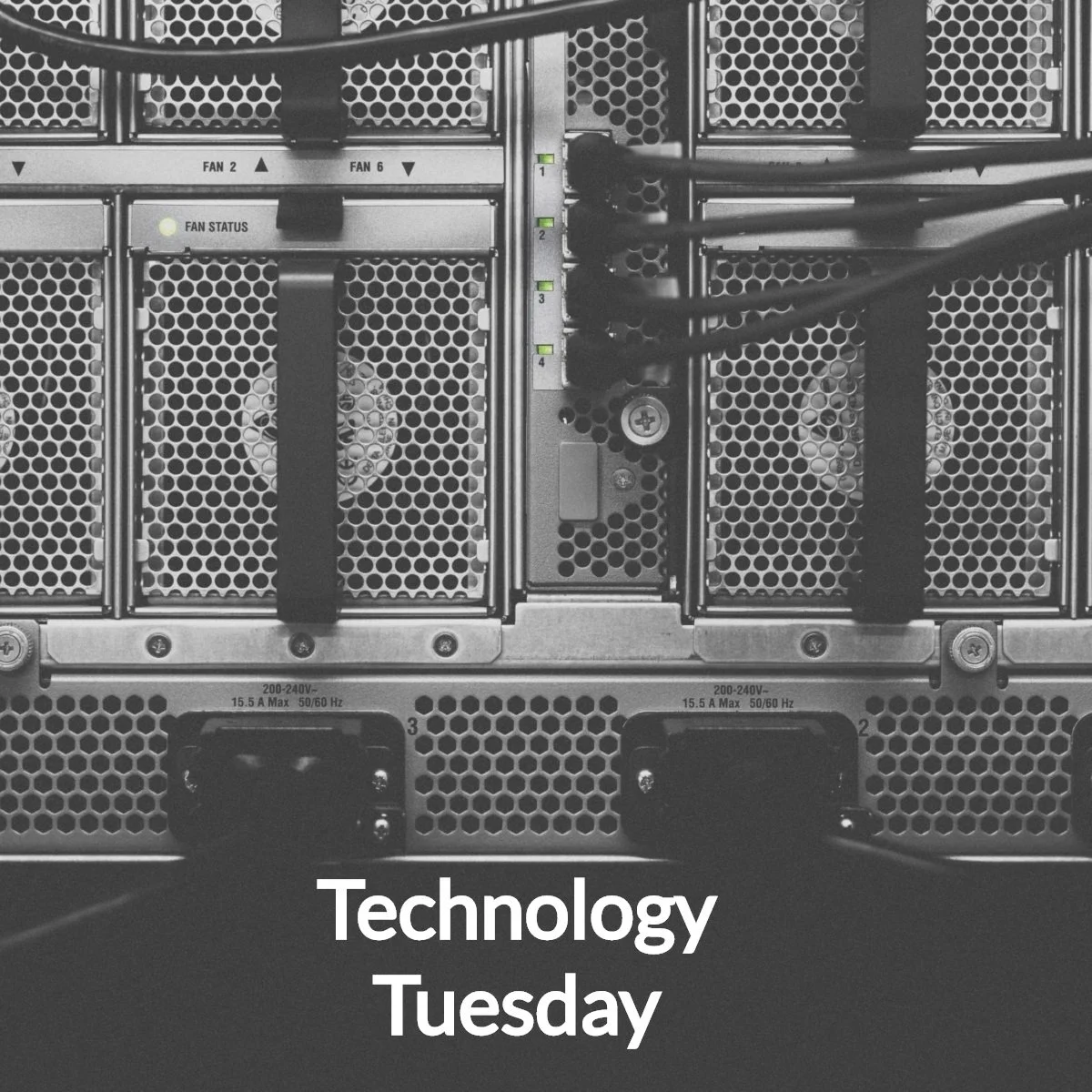What exactly are we talking about when we discuss water efficiency and conservation? First off, we are still talking about energy efficiency and energy conservation because water and energy are inextricably tied. This is because, in order to use water, we must move it to where we need it. In order to move it, we need energy.
Why We Need Tree Canopies | Part I
The San Joaquin Valley suffers from urban heat island (UHI)
affect; pavement and other dark-colored surfaces throughout the Valley absorb
sunlight, trapping heat and increasing local temperatures. This adversely
affects local air quality as well as energy efficiency capabilities, energy
consumption, public health, climate resilience, and quality of life, among
other measures. Furthermore, the SJV not only generates its own pollutant
emissions, but is also impacted by transport of pollutants around the Valley
and from the Bay Area. Although air quality in the region is slowly improving, SJV Counties still have
not met federal ambient air quality standards for pollutants such as PM2.5
and PM10 as well as 8-hour ozone.
There is no better (and cheaper!) solution to both increasing energy efficiency and reducing greenhouse gas (GHG) emissions than protecting and expanding our existing tree canopies and developing additional canopies. In addition, trees provide extensive water, economic and crime reduction benefits to urban areas.
There is a clear need for mitigation policies. Increasing tree growth in parks and making use of open non-green space, such as medians, public streets and plazas, by expanding tree canopies and creating a landscape in which jurisdictions understand how and why urban canopies are so important and beneficial will improve energy efficiency, local temperature and air quality, minimizing adverse effects of greenhouse gas emissions and urban heat island effect.
 |
| This is an ideal canopy, no? |
Native, drought-tolerant trees will not only thrive in
our region, but also contribute to necessary air quality improvement and
widespread cooling, especially in summer months. Tree canopies sequester CO2,
reducing the amount of greenhouse gases in the atmosphere. They are
natural air conditioners, shading and cooling both buildings and streets and
reducing summer temperatures of and, therefore, cooling costs for the entire tree-lined
neighborhood or community. Trees also provide windbreak, reducing heating costs, and absorb sounds, greatly reducing noise pollution.
 |
| Greater the canopy, greater the benefits. |
Additionally, streets and medians lined with trees require significantly less watering than those with grass. Trees help capture rainfall and
recharge aquifers through filtering water through their roots. This also
contributes to reduced storm water runoff, decreasing potential flooding, storm
water management costs and flow of polluted water.
Drought
conditions shouldn't stop the planting of trees. A lack of tree
canopy will not only negatively contribute to issues such as poor air and water quality, but
the continued loss of trees due to forest fire, bark beetle infestations and
bacterial infections, such as fireblight, will
worsen these effects on the local communities.
There is a clear need for mitigation policies. Increasing tree growth in parks and making use of open non-green space, such as medians, public streets and plazas, by expanding tree canopies and creating a landscape in which jurisdictions understand how and why urban canopies are so important and beneficial will improve energy efficiency, local temperature and air quality, minimizing adverse effects of greenhouse gas emissions and urban heat island effect.
Do you like the sound of this? Stick around for Part II where I will describe benefits in greater detail!
How to Save More Energy At Home
There are many ways to conserve energy, resulting in a lower utility bill and a happier Mother Earth. At Modernize, we are thrilled to see more homeowners use more energy efficient appliances, building materials, and tools to help conserve energy. Here’s a round-up of the best energy saving options that you can implement in your home.
Water
One of the easiest things that you can start doing today to save energy is to turn off the faucet in the kitchen and bathroom when you are not actively using the water. Whether you are brushing your teeth or measuring out cups of water for a recipe, the time in between the task will add up to substantial savings.
Set a timer for your shower. My greatest eco-sin is my love for a long, hot shower. As the mom of a little one, the shower becomes a great escape from answering all of the questions that an inquisitive toddler can throw at me. Still, I know I can let too much time slip away as precious hot water spirals down the drain. I have started setting a timer, just like I do when my kid takes a bath. For both of us, the ding of the timer means bath time is over.
Installing a low-flow showerhead is a great alternative for those who just cannot sacrifice the long shower, although using a low-flow showerhead in addition to limiting your shower time is the ideal conservation goal.
Water
One of the easiest things that you can start doing today to save energy is to turn off the faucet in the kitchen and bathroom when you are not actively using the water. Whether you are brushing your teeth or measuring out cups of water for a recipe, the time in between the task will add up to substantial savings.
Set a timer for your shower. My greatest eco-sin is my love for a long, hot shower. As the mom of a little one, the shower becomes a great escape from answering all of the questions that an inquisitive toddler can throw at me. Still, I know I can let too much time slip away as precious hot water spirals down the drain. I have started setting a timer, just like I do when my kid takes a bath. For both of us, the ding of the timer means bath time is over.
Installing a low-flow showerhead is a great alternative for those who just cannot sacrifice the long shower, although using a low-flow showerhead in addition to limiting your shower time is the ideal conservation goal.
Energy Star Appliances
When it is time to purchase new appliances, look for those labeled with the Energy Star logo. These appliances use considerably less energy than the ones they are replacing. You will be pleased with your utility bills when you notice how much you’ve saved. Additionally, you may save even more money on the appliances if you research rebates for the energy-efficient models. Be sure to keep the temperature in your refrigerator between 20 and 42 degrees for maximum savings.
When it is time to purchase new appliances, look for those labeled with the Energy Star logo. These appliances use considerably less energy than the ones they are replacing. You will be pleased with your utility bills when you notice how much you’ve saved. Additionally, you may save even more money on the appliances if you research rebates for the energy-efficient models. Be sure to keep the temperature in your refrigerator between 20 and 42 degrees for maximum savings.
Windows
It’s a costly investment, but new windows are a huge energy saver. Look for U-factor and Solar Heat Gain Coefficient (SHGC) numbers when shopping for new windows. The U-factor measures the window’s rate of heat loss. When looking at the U-factor you want a lower number. The lower the number the better the insulating properties. SHGC measure a window’s ability to block heat from the sun. With SHGC the ratings are between 0 to 1 and the lower the number the heat that is transmitted. Depending on your region, one may have more importance than the other. If new windows are not in your budget anytime soon, take a weekend to add weather stripping and window films to increase energy efficiency for the time being.Many utilities within California offer energy saving assistance programs that help weatherize your home. If you are interested you can click the links provided to see if you are eligible. PG&E, SCE, SCG
It’s a costly investment, but new windows are a huge energy saver. Look for U-factor and Solar Heat Gain Coefficient (SHGC) numbers when shopping for new windows. The U-factor measures the window’s rate of heat loss. When looking at the U-factor you want a lower number. The lower the number the better the insulating properties. SHGC measure a window’s ability to block heat from the sun. With SHGC the ratings are between 0 to 1 and the lower the number the heat that is transmitted. Depending on your region, one may have more importance than the other. If new windows are not in your budget anytime soon, take a weekend to add weather stripping and window films to increase energy efficiency for the time being.Many utilities within California offer energy saving assistance programs that help weatherize your home. If you are interested you can click the links provided to see if you are eligible. PG&E, SCE, SCG
Simple Tips
Keep your heat as low as you can stand it in the winter and as high as you can handle in the spring. This is much easier for me to do in the winter when I can wear layers and get cozy under blankets. In the summertime, my best bet is to leave my house so I can turn the air conditioner temperature up and take advantage of air conditioned stores in public places like the library or a shopping mall. The latter is not recommended for saving money.
Keep your heat as low as you can stand it in the winter and as high as you can handle in the spring. This is much easier for me to do in the winter when I can wear layers and get cozy under blankets. In the summertime, my best bet is to leave my house so I can turn the air conditioner temperature up and take advantage of air conditioned stores in public places like the library or a shopping mall. The latter is not recommended for saving money.
Unplug everything when not in use. Make this task easier by using power strips so you only have to unplug one outlet for several devices. Charge all of your phones, tablets, and other rechargeable items at the same time, so you can unplug the power strip for the remainder of the day. It may seem like a hassle to unplug things like your coffee maker or hair styling tools, but if you’re serious about saving energy and money, these small tasks will add up quickly.
5 More Easy Energy Savers
- Replace standard bulbs with CFLs that can be recycled when they burn out.
- Use home-automation products to control lighting and other electronics.
- Decorate your home with a combination of sheer drapes to allow the sun in during winter months, or blackout curtains in the summer to keep your home from overheating from the sun.
- Raise the thermostat and cool your room at a lower cost with ceiling fans.
- Wash full loads in laundry machines and dishwashers.
- Use home-automation products to control lighting and other electronics.
- Decorate your home with a combination of sheer drapes to allow the sun in during winter months, or blackout curtains in the summer to keep your home from overheating from the sun.
- Raise the thermostat and cool your room at a lower cost with ceiling fans.
- Wash full loads in laundry machines and dishwashers.
* Note: This article was written by Stephanie Sylvester from Modernize.com *





